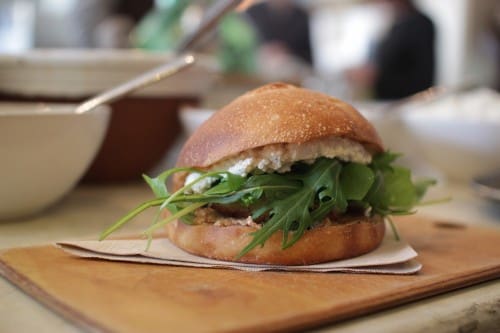fresh cheese from waste milk
When a barista makes a milky drink, a flat white, latte etc. nine times out of ten they will have some frothy milk leftover in the end of their jug. The better the barista, the less milk there will be but generally there is always a little something. For most people this goes down the sink, as the jug gets washed before the next coffee is made. And indeed for years this is what we did. Until we realized we could be saving this milk and using it to make cheese.
We call it a ricotta even though purists would say that it is not, as it is not made from whey**. But ricotta literally just means re-cooked {ri-cotta ; re-cooked} and this is exactly what we are doing with the milk. It is ‘cooked’ first in the initial steaming for the coffees, and then we ‘re-cook’ it again in the second heating when we add lemon juice to produce the cheese curds.
We don’t have an exact recipe to give you, I have to admit our methods for this are quite crude. Roughly when we have around eight litres of leftover milk, which takes about 2-3 days, we heat it until just boiling, add a glass of lemon juice (around 300ml) and then take it off the heat straight away. We give it just two stirs with a wooden spoon and then let it rest for a few minutes. You should see the curds separating almost straight away. Let it cool slightly and then separate the curds from the whey by straining the liquid through a cheesecloth or cheese baskets.
We get about 1kg of cheese from 8 litres of milk which we then season and mix with herbs and spices for our sandwiches and specials, or give it to our baker to use in some of the cakes as a cream cheese substitute.
**How ricotta is traditionally made:
The whey (the leftover liquid) from an initial cheesemaking process is used to make a second cheese. It is re heated and a coagulant is added, namely lemon juice or another acid, producing the soft cheese that we know as ricotta. Generally it is pretty flavourless as all the flavour from the milk has gone into the initial cheese. But a healthy bit of seasonaing and you have a delicious soft cheese. Made from from a waste product. Bonus.






Leave a Reply
Want to join the discussion?Feel free to contribute!